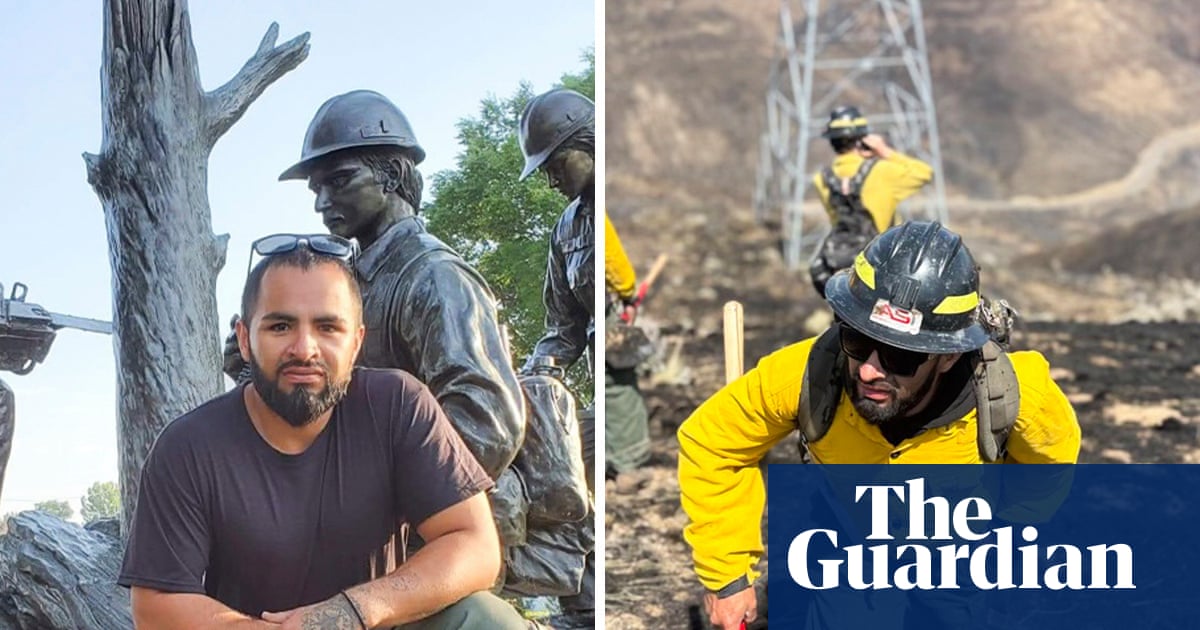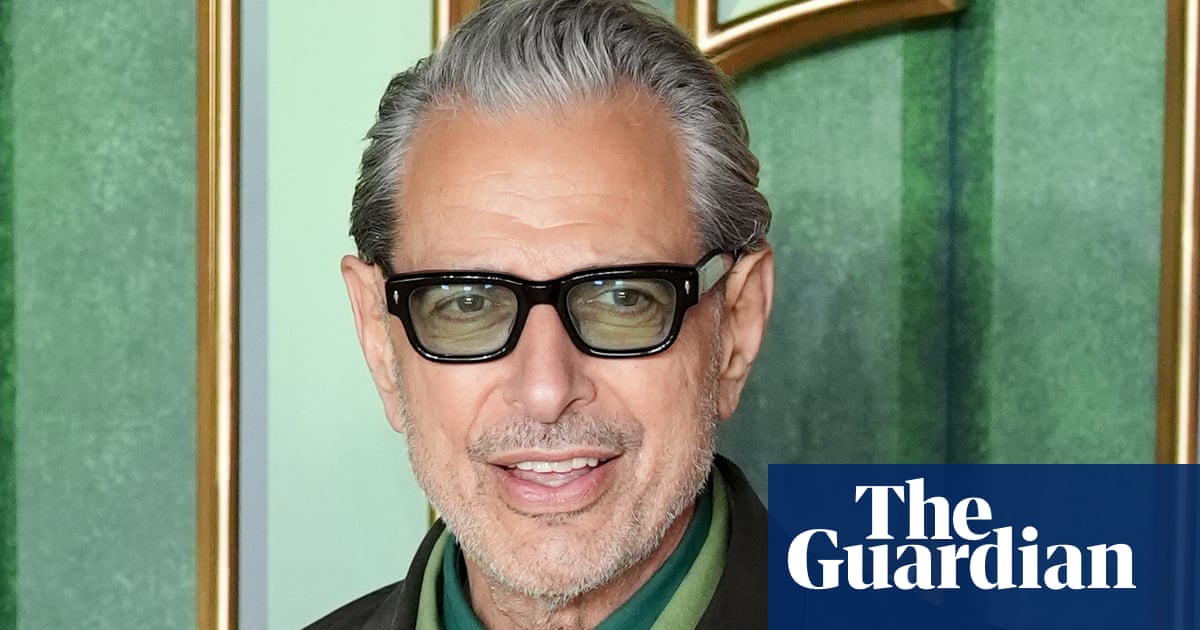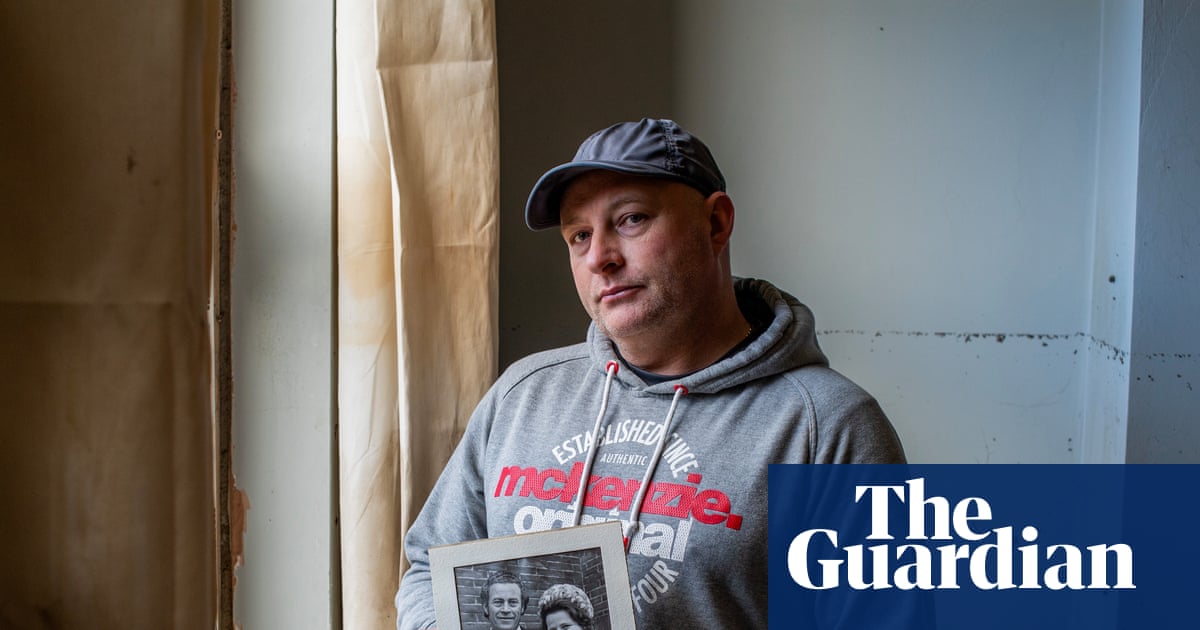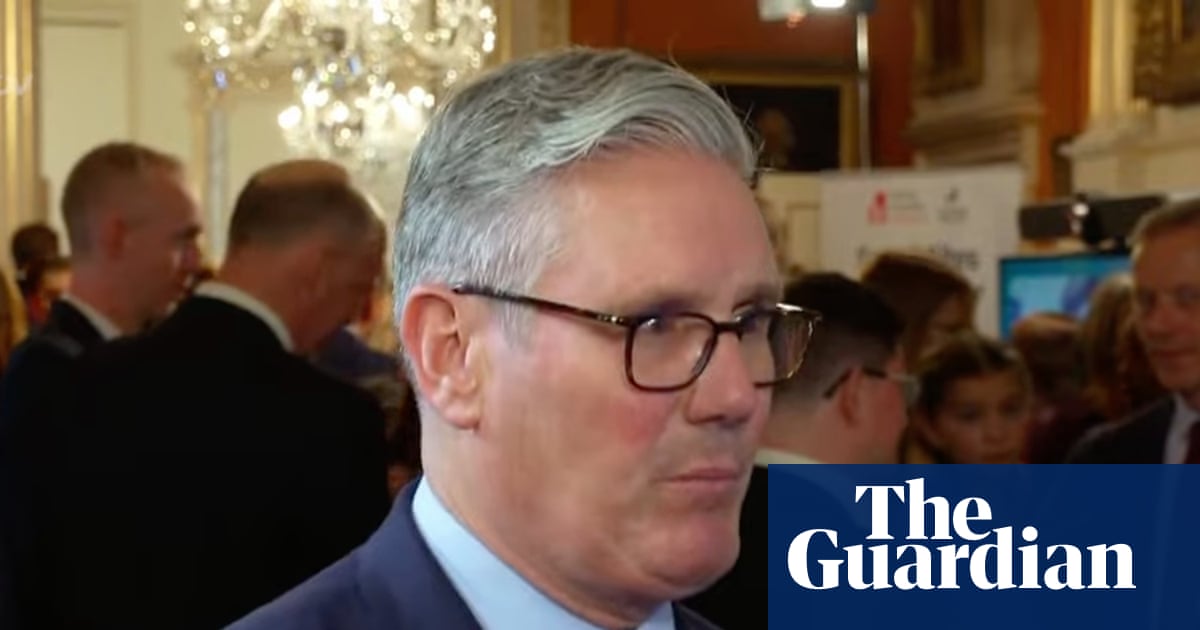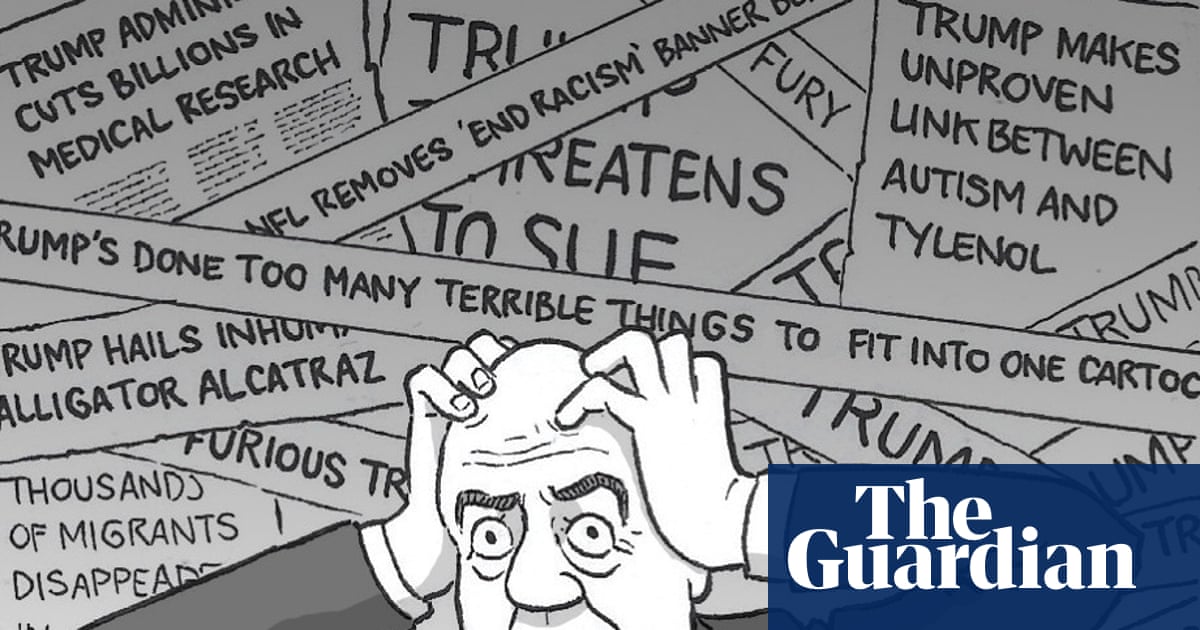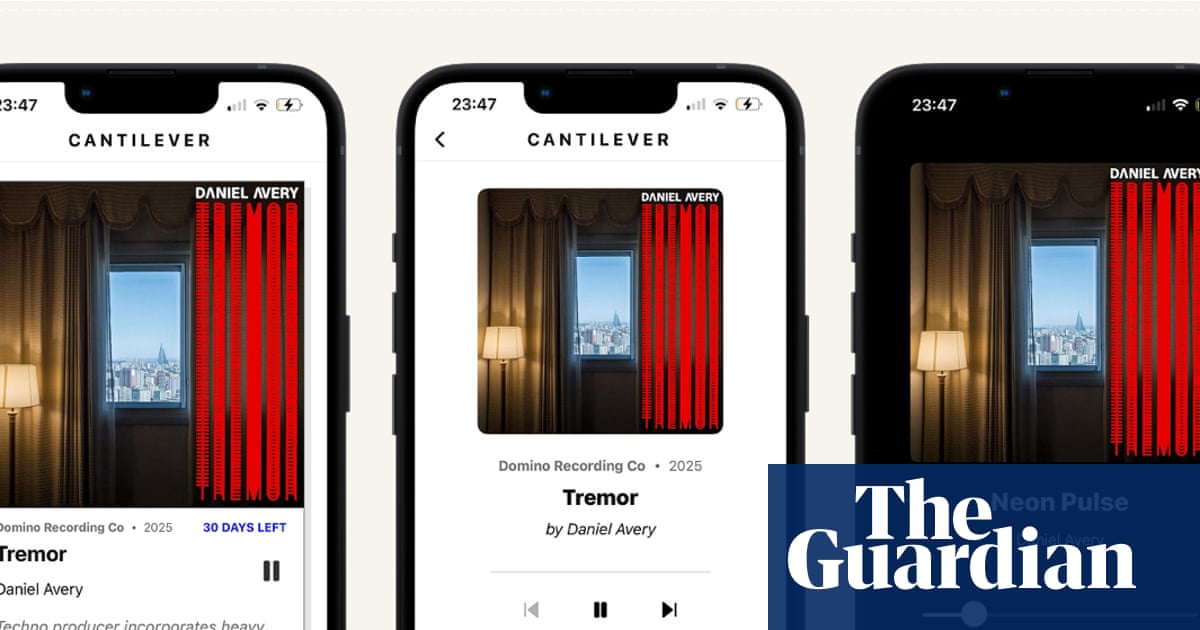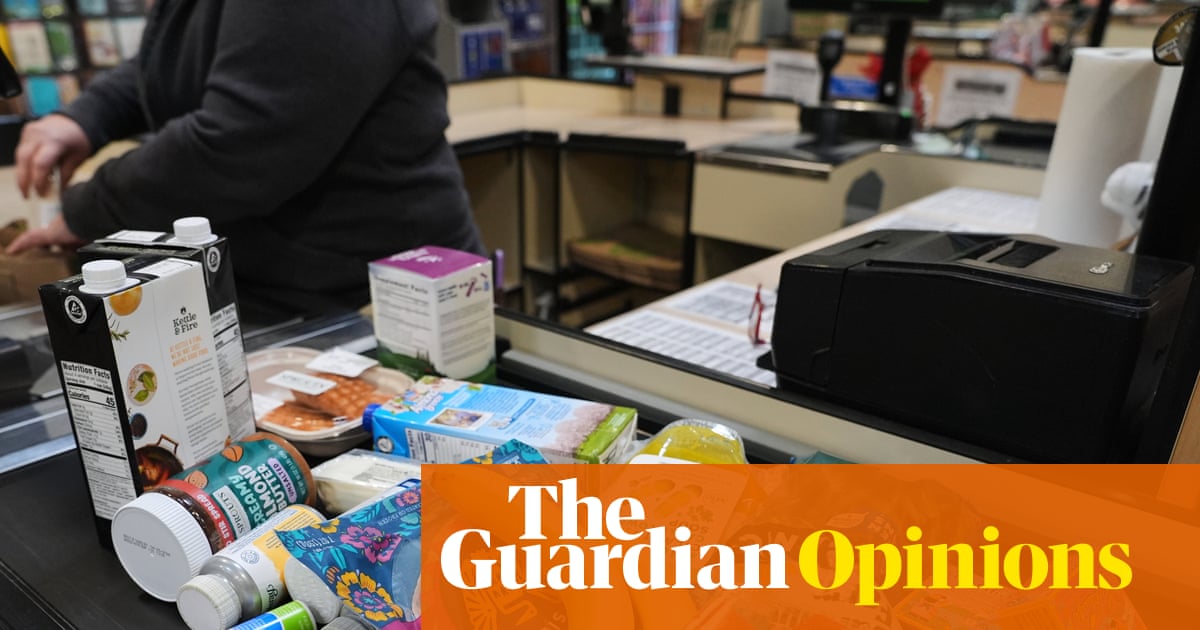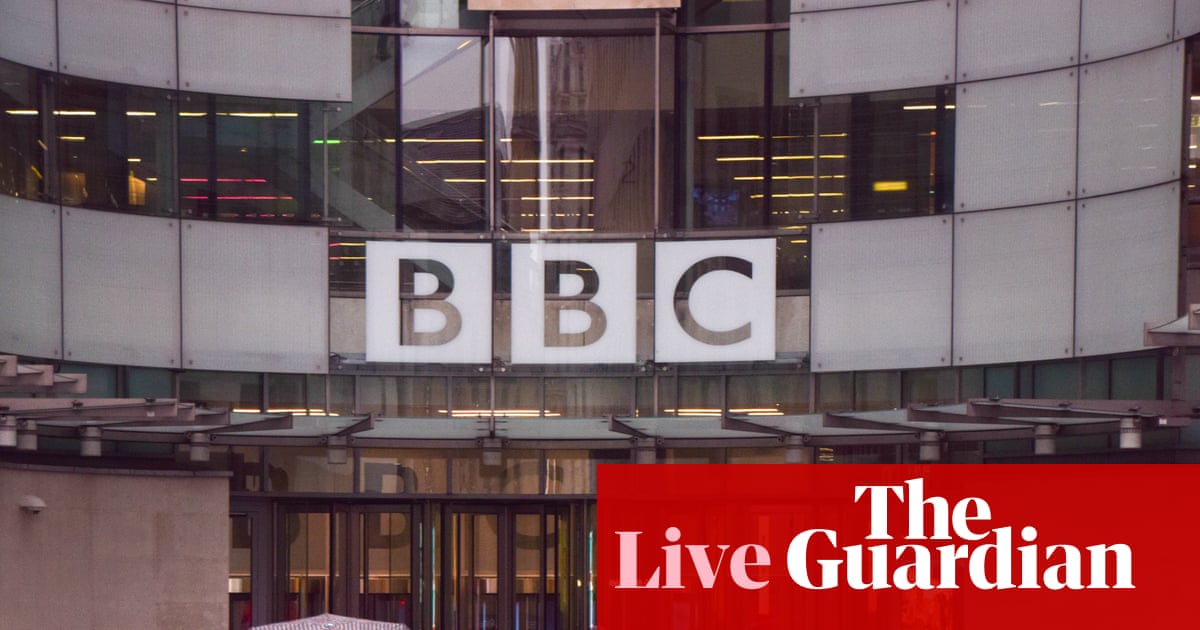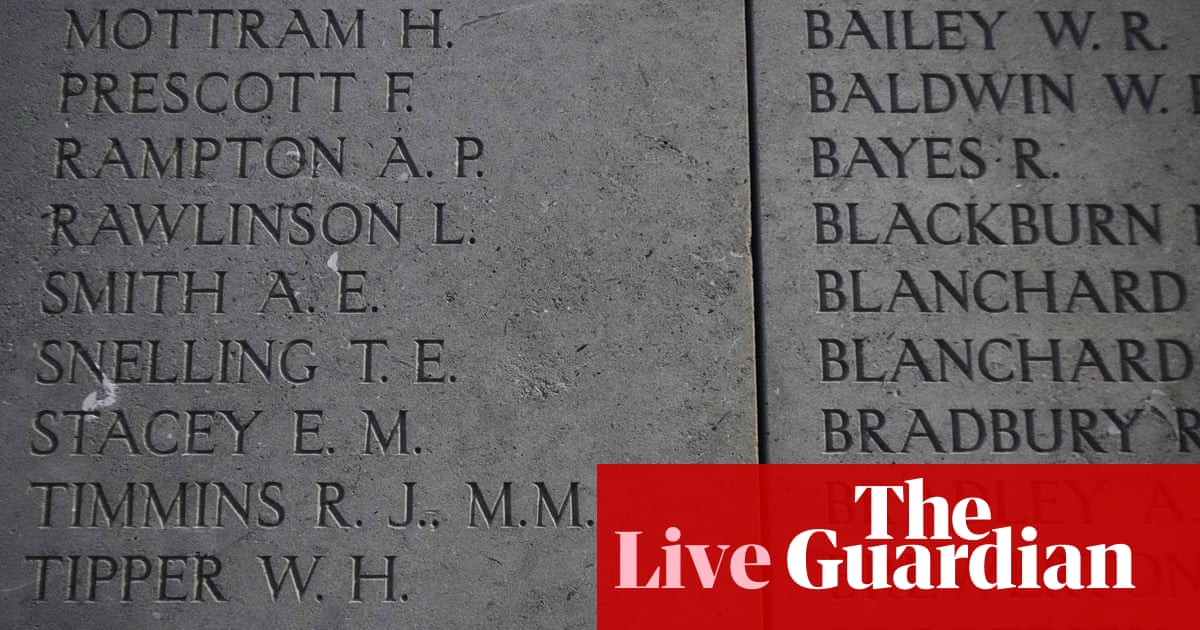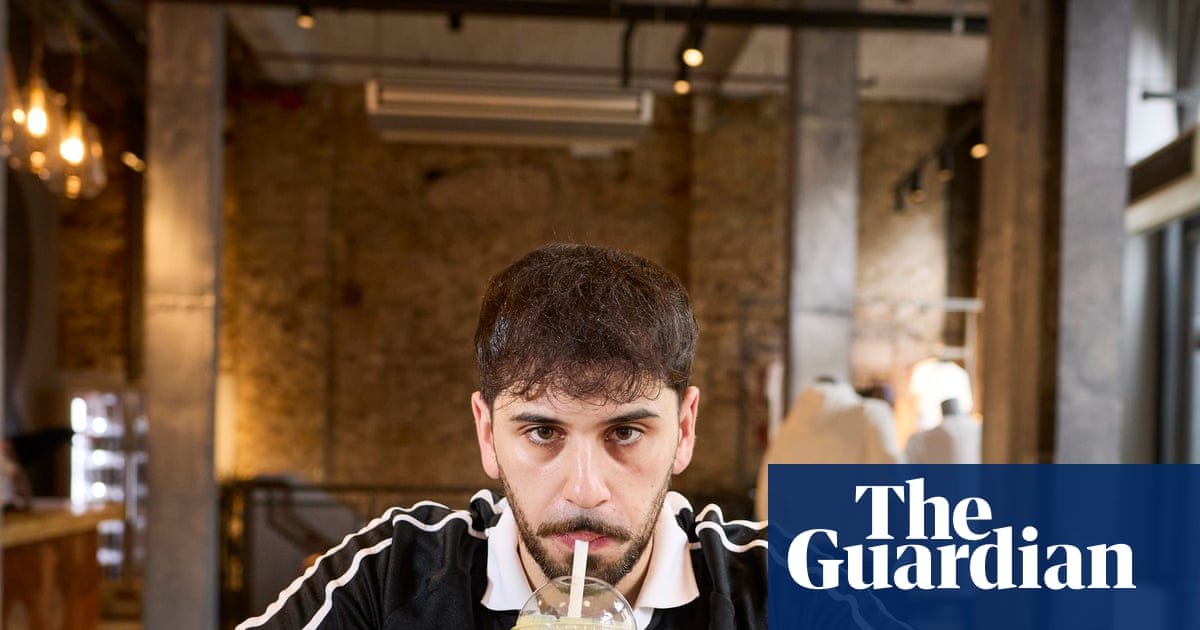Once upon a time, the world was powered by whale. Oil made from whale blubber burns cleanly and well, though it smells strongly of fish. It was, for a while, the perfect fuel. To meet the growing demand, whales were hunted almost to extinction.
And then we discovered that oil could come from the ground. Lamps once lit by rendered blubber were swiftly changed over to run on what Americans call kerosene and the British call paraffin. Later, those lamps were changed to run on electricity, and instead of burning oil in the lamps themselves, we began to burn it in power plants miles away.
This is where we find ourselves today. When a fossil fuel is combusted, it releases energy, which boils water, which turns to steam, which drives a turbine, which generates electricity. This is an almost comically inefficient process, requiring immense amounts of material: more than 8bn tons of coal and 4tn cubic metres of fossil gas every year. And given the basic chemistry of combustion, it’s unavoidable that burning all this stuff leads to an immense buildup of carbon dioxide in the atmosphere. Worse, fossil gas itself is made of methane – shorter lived in the atmosphere than carbon dioxide, but more than 80 times more potent while it lasts. Around a quarter of annual greenhouse gas emissions come from using fossil fuels to generate electricity.
To have a hope of limiting warming, this has to change. The transition to clean energy will be difficult, but not impossible. Some of it is already happening. Renewable energy technologies have become good, reliable and inexpensive. Solar and wind, as well as the batteries needed to compensate for their intermittency, are getting cheaper at an astonishing rate. The price of onshore wind power plummeted 70% in the last decade, while solar costs fell by almost 90%. As a result, renewables are already being deployed at rates forecasters never imagined. If you had told me, even five years ago, how quickly the energy transition would be proceeding, I would not have believed you. It’s more than I ever dared to hope for. Finally, things are beginning to move. But they need to move faster. We know they can. They have before.
After having fuelled the early stages of the Industrial Revolution, melted whale was quickly displaced by paraffin, an easier, cheaper source of energy. But petroleum alone did not save the whales. Without laws in place to hold it back, the whaling industry would have happily continued the slaughter. Whale oil was still moderately useful for several things, and whale lives were valueless. Dead whales were used to soften leather and lubricate machines and to somewhat mitigate the effects of trench foot in the first world war. It’s easy to think of whale hunting as a vestige of the Victorian era. But even as technology developed and the world moved on to paraffin, the killing continued – and in fact increased. In 1964, as the Beatles embarked on their world tour and three Soviet cosmonauts launched into Earth orbit, more than 80,000 whales were killed. As late as 1975, General Motors was blaming the Endangered Species Act for transmission problems in the cars it sold. The automatic transmission fluid had been made of sperm whale oil, and the company saw no easy alternative.
There are many reasons whales still exist, but one reason is this: people chose to stop hunting them. In 1946, the International Whaling Commission (IWC) was established to regulate whale stocks and “make possible the orderly development of the whaling industry”. It attempted to impose quotas and move the industry toward something more sustainable. This proved difficult, so the IWC simply gave up and imposed a moratorium on whaling altogether. Some countries flounced out in a huff; others had never joined in the first place. But in the wake of the initial moratorium in 1982, the demand for whale products plummeted worldwide. Every child knows the haunting sound of whale song, if only from hearing it on TV. In 2018, the IWC declared that its purpose was no longer protection of the whaling industry but of whales themselves. The transition was complete.
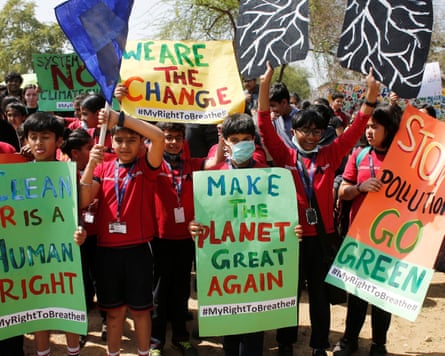
This is a story with a happy ending, or at least a less tragic one than might have been expected. It’s also a story with a moral. We now need to make coal- and gas-fired power plants go the way of whale oil. And if you want to change the world, it helps first to have an alternative. People invented railways to replace horse-drawn carriages, electricity to supplant steam engines, rock oil for whale oil, and the market – Adam Smith’s great invisible hand – ensured they took hold. The invisible hand has now provided alternatives to fossil fuels: wind and solar are now the cheapest ways of generating electricity that have ever existed. The technologies are also simply better in many ways: unlike coal and gas plants, they do not foul the surrounding air, and their fuels are abundant and free in nature.
But another moral of the whaling story is this: markets may be powerful, but they are not enough. Markets found an alternative to whale oil in paraffin and gas; whaling increased nonetheless. It took a ban to save the whales. It’s not sufficient to have a hand, invisible or not. You have to decide what you’re going to do with it.
On 27 October 1948, what became known as the Donora Death Fog appeared over a town in Pennsylvania. Donora, less than an hour’s drive from Pittsburgh, was home to 14,000 people, most of whom worked in the steel or zinc mills along the western bank of the Monongahela River. There had been temperature inversions and smog events before, but this one lasted for days. The trapped air, heavy with toxins from the mills, turned rusty and thick. There was no escape. Anyone who walked outside would quickly begin to choke and vomit, and the roads were invisible in the thick smog. Six thousand people fell ill, 600 were hospitalised and 20 died. The toll would have been even higher had a storm on Halloween night not dissipated the fog.
Donora’s steel mill closed in the 1960s, a casualty of larger economic forces. But today, demand for steel has never been higher. In 2020, the world used more than 500lb (225kg) of the stuff for every person on Earth. The need will only grow with the energy transition: the pylons and turbines we need will be made of steel, as will transmission towers, electric vehicles, train tracks and countless other things.
Unfortunately, steelmaking is itself a substantial source of greenhouse gas emissions. Together with other industrial metals, steel is responsible for more than 5% of global greenhouse gas emissions. And steelmaking is not the only industrial process that contributes to climate change. Cement production accounts for more than 2.5% of global emissions. Plastics, too, emit greenhouse gases when they are manufactured.
These industrial processes, which together account for almost a quarter of global emissions, are terribly difficult to decarbonise. It is not simply a matter of switching fuel sources; the way in which these products are made releases greenhouse gases even if no fossil fuels are burned. We don’t know how to decarbonise industry, at least not yet, not cheaply, but we need to find out as soon as possible, because progress is often a long game. Investments in research, deployment and scaling existing technologies are the initial ripples that will have to build to a groundswell of further action.
Slow progress has accelerated before. Throughout the 1950s and 1960s in the United States, small actions began to coalesce into something bigger. The Donora Death Fog prompted President Harry Truman to convene the first national conference on air pollution. In 1955, Congress passed rudimentary clean air legislation: toothless, lacking in enforcement power or funding, but quietly revolutionary in its own small way. Pollution was no longer considered an isolated problem to be hashed out between individuals. Instead, it was treated as a menace to public health and the economy. The surgeon general was authorised to investigate the sources of air pollution, and in 1963 the government authorised research into solutions.

All of this plodding progress culminated in the Earth Day events of 1970, in which millions of Americans took to the streets to demand cleaner air and water. Eventually, President Richard Nixon caved to public pressure, founded the Environmental Protection Agency (EPA) and signed the Clean Air Act of 1970.
Millions of people are alive today because of this legislation. Air pollution kills. Living in a polluted place is worse for your health than drinking, unsafe sex or a bad diet. Particulate matter is dangerous when the individual particles become small enough for human lungs to inhale. While larger particles – dust, sand, wildfire smoke and pollen – can accumulate in the upper airways, the smaller, more insidious stuff that buries deeper into the lungs tends to come from the burning of fossil fuels. The sulphur in coal and oil is emitted as sulphur dioxide (SO2) when they are burned, giving off the suffocating, acrid smell of a just-struck match. Chemical reactions in the atmosphere then convert the sulphur dioxide to sulphate aerosols, which contribute not only to particulate matter but also to acid rain. The updated Clean Air Act of 1990 required major reductions in sulphur dioxide emissions, which have now been reduced by more than 90% in the United States. Acid rain rates have plummeted in response.
The fact that good things have happened in the past does not, of course, make them inevitable in the future. But I think it is good to celebrate victories, even partial ones. I remember worrying about acid rain as a child and wondering why the grownups were doing so little to help. I now realise that the grownups did, in fact, help and that there was a small, faceless army of dedicated scientists, regulators, legislative assistants, campaigners, lawyers and others trying to keep me safe. Now it’s my turn to be one of the adults up against seemingly impossible odds, fighting to make the world safer for my children. I don’t “hope” we win this fight. I know we have to.
In the early 20th century, driving a car was an unpleasant experience. Burning gasoline caused the engines to “knock” so violently that passengers would be thrown out of their seats. This made cars a tough sell for consumers. An industrial scientist named Thomas Midgley Jr was tasked with finding a solution. He discovered that ethanol – a mixture of gasoline and the same alcohol found in wine or spirits – was an effective antiknock fuel. But the car companies hated it. The oil companies hated it. It was impossible to patent alcohol, and anyone could make it at home. So Midgley returned to the drawing board and came up with something better. Better, at least, for the industry. Worse, infinitely worse, for the world in general.
Today, Thomas Midgley is remembered as the man who added lead to gasoline. Having discovered a method that gave him something patentable and profitable, Midgley then assured the public and the scientific community that only lead could prevent engine knocking. He also claimed that it was perfectly safe, concealing the fact that he himself had received treatment for lead poisoning. The first leaded gasoline was sold in Dayton, Ohio, in 1923. By the 1930s, almost all the gasoline available in the United States contained a little bit of poison.
Once leaded fuel solved the problem of engine knock, cars quickly displaced horses and motorised transportation took over the world. Almost all of it currently runs on fossil fuels, which means that as we travel around our planet, we do it harm. Globally, 14% of greenhouse gas emissions come from the transportation sector. In the United States, a vastly car-dependent society, transportation is responsible for almost a third of national emissions. Cars and aeroplanes guzzle oil and spew out carbon dioxide.
So what do we do about this? Electric vehicles are an obvious solution; even when accounting for manufacturing and lithium mining, battery-powered cars emit far, far fewer greenhouse gases than their internal combustion equivalents. Good public transit, walkable and bikeable cities, and denser, more affordable housing are also part of the solution. That said, there are almost 1.5bn cars in the world, and the vast majority of them burn gasoline or diesel in their tanks. They will have to be replaced with something better. It seems impossible to shift the way the world moves. Yet the stuff that makes cars go has changed before. There’s no reason it couldn’t happen again.
The shift began with a research team led by a former Manhattan Project scientist named Clair Patterson. Patterson and his colleagues discovered that levels of lead in the Earth’s atmosphere were shockingly high. Subsequent research showed that there was lead in the ocean, at the top of mountains, and in the low-hanging air over polluted cities. Lead levels in the sky were a thousand times higher than they had ever been before in human history. It was obvious where this lead was coming from: all those cars and all that leaded gasoline were changing the atmosphere in unprecedented ways.
And it was becoming clear what it meant for us. By the early 1970s, the majority of children in the United States were suffering from lead poisoning. The average concentration of lead in the blood of children under five was more than four times higher than the levels we currently consider safe. Lead wreaks havoc on developing bodies and brains, leading to headaches, hyperactivity and developmental delays. While devastating for children, lead is not exactly nourishing for adults, who can experience symptoms ranging from memory loss to low sperm count.
When Patterson expressed his concerns about the levels of lead in the atmosphere, industry toxicologists were quick to label him a zealot and a rabble-rouser. Robert Kehoe, a toxicologist and chief medical adviser at the Ethyl Corporation, devoted his career and a considerable amount of corporate money to claiming that leaded gasoline was completely safe. Kehoe pronounced that he would be happy to discontinue lead in gasoline, but such an economically impactful step should be undertaken only on the basis of proof, not opinions.
And he argued that the standard of proof should be controlled and set in industry-funded toxicology laboratories, not by the measurements of independent scientists like Clair Patterson.
Kehoe insisted on referring to the measured lead levels in blood, water and soil as normal. But, Patterson protested, “normal” and “common” did not mean “natural” or “safe” or “good”. The use of leaded gasoline had created a new normal, and it was poisoning everyone. In arguments that sound familiar today, Kehoe claimed that human bodies could easily adapt to higher levels of ambient lead. That, said Patterson, was not generally how evolution worked.
Patterson carried on doggedly raising the alarm, writing to the governor of California and the US Congress. The industry pushed back, ensuring that Patterson was left off a National Research Council lead study, despite being the world’s leading expert.
By sheer persistence, Patterson began to win. The Clean Air Act of 1970 required the EPA to set air quality standards that limited lead. By 1975, all new cars were required to run on unleaded gasoline. In 1986, Japan became the first country to ban leaded fuel. In the United States, where sales had already plummeted, a ban took effect in 1996. In 2021, Algeria became the last country in the world to ban leaded gasoline.
In the intervening years, lead poisoning has decreased dramatically. Average blood lead levels in the United States have fallen 95% since the 1970s. Humanity’s battle against lead is not over, as the Flint water crisis – in which an entire city was exposed to drinking water contaminated by lead pipes – demonstrates. There is still lead in paints and pipes, especially in lower-income countries. Still, the ban on leaded gasoline has made a difference. More than 1 million lives are saved every year. Millions of children are not exposed to a toxin that stunts their development. And far away, there is an asteroid that orbits the sun between Mars and Jupiter – not big enough to be a planet, not small enough to be forgotten. I can’t see it, but I know it’s there, a source of inspiration, motivation to persist, a reminder to hope. It is named after Clair Patterson.
Climate change is a global crisis. If we are to tackle it, we must do so together. Yet it is a struggle to imagine that happening. When have countries ever come together for the good of our common humanity? When has national or corporate self-interest ever been subordinated to something higher? But there is a story of global cooperation in the face of looming catastrophe, a tale that gives us reason, however remote, for hope.
In the 1970s, scientists discovered something very worrying indeed: ozone in the stratosphere was disappearing. Ozone is a dangerous pollutant in the lower atmosphere, but up in the stratosphere it turns into a miracle. Molecules of ozone absorb a range of UV light, acting as a layer of powerful natural sunscreen that protects all life on Earth. The planet was losing its sunscreen, exposing us to carcinogenic UV rays and perhaps threatening our very existence.
The danger in the stratosphere was the direct consequence of a technological miracle down below. In the late 19th and early 20th centuries, iceboxes had been replaced by new electric refrigerators. Refrigerators work by turning a chemical called a refrigerant from a liquid to a gas. Early refrigerants were highly toxic and refrigerators were prone to dangerous leaks. It was necessary to identify an alternative. And the person to do it was Thomas Midgley.
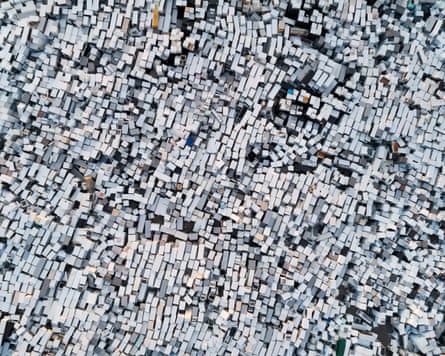
Yes, the very same chemist responsible for adding lead to gasoline also invented chlorofluorocarbons, or CFCs, as a replacement for the toxic chemicals in early refrigerators. CFCs were marketed under the futuristic name Freon. Freon was stable and nontoxic. It did not pollute the lower atmosphere. It would not catch fire. And it enabled a boom in home and car air-conditioning. Eventually, Freon became the only coolant allowed under many public health regulations. CFCs also turned out to be useful in air conditioners, fire extinguishers, spray cans and materials like Styrofoam. As a result, millions of tons were manufactured, used and released. But when CFCs rose up into the stratosphere, they became dangerous.
In 1974, the chemists F Sherwood Rowland and Mario Molina showed that when CFCs were exposed to the relentless bombardment of UV light high in the stratosphere, they would disintegrate into chlorine atoms. Chlorine is devastating for the ozone layer: one atom can rip apart more than 100,000 ozone molecules. That same year, the meteorologist Paul Crutzen showed that weather conditions in the coldest places on Earth could make the problem even worse. In 1985, measurements over Antarctica showed a shocking decline of ozone. It was a wound in the upper atmosphere, an ozone hole poised to grow bigger with time.
Crutzen, Rowland and Molina won a Nobel prize for their discovery. Susan Solomon, the atmospheric chemist who helped explain the ozone hole, probably should have as well. It was clear that CFCs were dangerous. But they were useful, too. The chemical industry screamed that phasing out these substances would destroy the economy. Its lobbyists claimed that more than $135bn worth of assets were dependent on the use of ozone-depleting substances. Corporate executives stressed the infeasibility of developing alternatives and the catastrophic impacts on inflation and jobs should regulations be put in place. Banding together, the chemical companies established the Alliance for Responsible CFC Policy in order to advocate for irresponsible CFC policy.
The alliance had political allies. The US secretary of the interior suggested that Americans could perhaps buy sun lotion and hats to protect themselves from UV radiation. In 1995, a Republican congressman with the implausibly perfect name of John Doolittle argued that there was too much uncertainty about the role of CFCs in ozone depletion to take action. “I’m inclined to believe that we’re not giving Mother Nature enough credit for being able to replenish the ozone layer,” added another congressman.
The arguments against banning CFCs register as somewhat half-hearted now. Companies and their allies put up a fight, but not a desperate one. There were alternatives available – an inconvenience, to be sure, but hardly an existential threat. And despite mumbling from conservatives about damage to the economy and jobs, their leadership took things seriously. Margaret Thatcher had studied chemistry, and Ronald Reagan had had skin cancer.
It would be too glib to draw neat parallels between the crisis of the ozone hole and the far more complex global crisis of climate change we face today. Metaphors are never exact. Still, it’s fair to summarise the problem of ozone depletion succinctly: we fixed it. In 1987, the Montreal Protocol was adopted, regulating the making and use of chemicals that deplete the ozone layer. It was ratified by every country on Earth. Today, the ozone hole is beginning to shrink. Not smoothly, and not immediately, but the trend is clear: things are getting better.
Only now, with the benefit of hindsight and an improved understanding of science, can we see how close we came to another sort of calamity. In the justified panic over CFCs and the ozone layer, it was easy to lose sight of another of their properties: CFCs are greenhouse gases. By reducing CFC concentrations in the atmosphere, the Montreal Protocol also avoided around 1C of global warming. And we appear to have dodged an additional bullet: if the ozone hole had been permitted to grow, the resulting bombardment of UV radiation would have disrupted photosynthesis and caused enormous numbers of plants to die. Forests would have shrivelled, crop yields would have plummeted and atmospheric CO2 levels would have shot up. The sun would have rained its cancerous UV light down on a planet that was both burning and starving.
This did not come to pass. The world veered from an apocalyptic scenario to whatever strange story we now find ourselves writing. And this time, we know the planet can be saved from unspeakable horror. We’ve done it before.
Adapted from Human Nature: Nine Ways to Feel About Our Changing Planet by Kate Marvel, published by Scribe

 2 months ago
50
2 months ago
50



